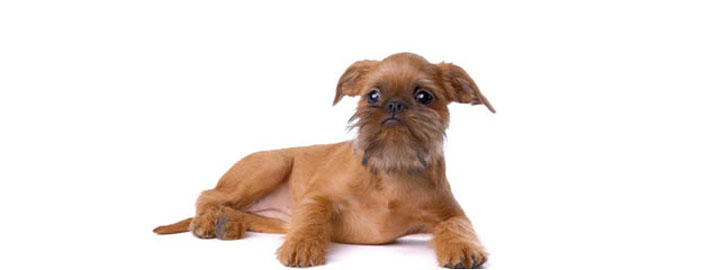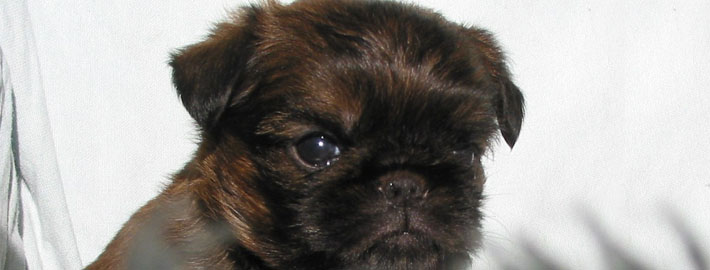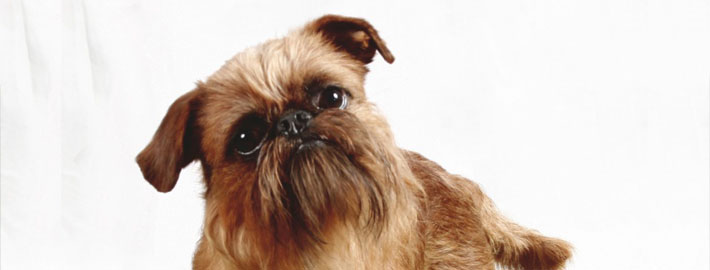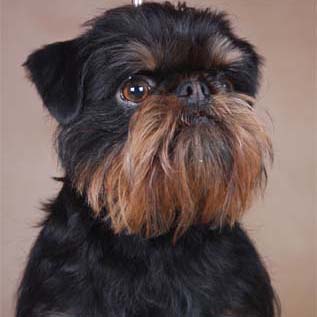What makes the Griffon Bruxellois Unique?
The spunky Brussels griffon is full of himself, brimming with self-confidence and gusto. He is bold, playful, stubborn and mischievous. He is usually good with other dogs and pets. He tends to bark and climb, and some Brussels griffons can be escape artists. This breed makes a saucy companion for a family wanting an entertaining, sensitive pet.
Breed Groups
Page Contents
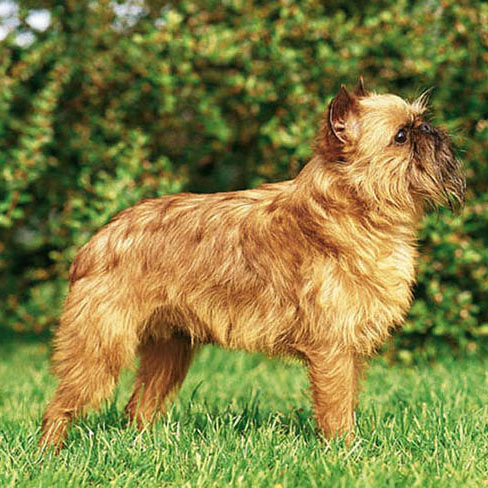
SnapShot
| Size: | Males – 18 to 20 cm (7 to 8 inches) Females – 18 to 20 cm (7 to 8 inches) |
| Weight: | Males – 2.5 to 5.5 kg (6 to 12 pounds) Females – 2.5 to 5.5 kg (6 to 12 pounds) |
| Origin: | Belgium |
| Life Span: | 12 – 15 Years |
| Colour: | reddish brown with a little black, black and tan, and and solid black |
| Litter Size: | 1 to 3 puppies |
Is the Griffon Bruxellois Right For You?
The Brussels griffon is an active breed, always on the lookout for action. He needs daily mental and physical stimulation, but his small size makes such stimulation possible with a robust indoor game. He also enjoys a short walk on leash. Griffons are good dogs for apartment life and will do okay without a yard.
The rough coat needs combing two or three times weekly, plus shaping by stripping every three months. Grooming for the smooth coat is minimal, consisting only of occasional brushing to remove dead hair
In 5 Words
- Affectionate
- Charming
- Lively
- Curious
- Loving
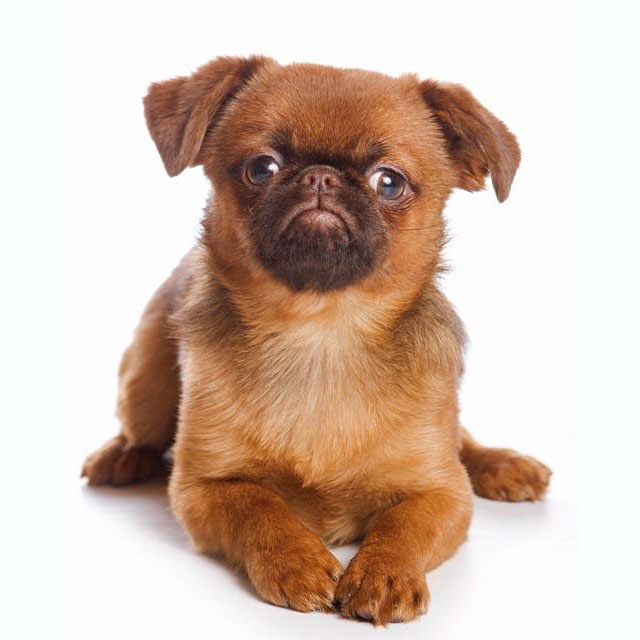
Characteristics
Learn About the Griffon Bruxellois
Description
General Description
The Griffon is a sturdy toy dog that is often thought to look like an Ewok from the Star Wars movie. The large head is round with a domed forehead and a deep stop. The muzzle is very short, appearing to be pushed back. The black nose is very short. The dog has an overbite with a hanging tongue. The black eyes are wide set and prominent with long, black eyelashes. The ears are high set, either cropped or left natural. Natural ears are carried semi-erect; when cropped the ears stand up coming to a point. The straight boned legs are medium in length. The tail is set high and docked to about 1/3 of the length. Note: cropping ears or docking tails is illegal in most of Europe. There are two types of coats, rough and smooth. The rough coat is dense and wiry. On the smooth coat, also called the Petit Brabancon variety, the fur is short, tight, glossy and straight. The short coats are easier to groom. Coat colors include red (reddish brown with a little black at the whiskers and chin), belge (a mixture of red-brown and black usually with black mask and whiskers), black and tan (black with reddish brown markings under the chin, legs, above each eye, the edges of the ears and around the vent), and solid black.
Size
On average, Griffon Bruxellois measures between 7 and 8 inches (18 – 20 centimeters) at shoulder and weigh between 6 and 12 pounds. (2.5 to 5.5 kilograms).
Coat
The breed can have either a rough or smooth coat. There are two types of coats, rough and smooth. The rough coat is dense and wiry. On the smooth coat, also called the Petit Brabancon variety, the fur is short, tight, glossy and straight. The short coats are easier to groom. Coat colors include red (reddish brown with a little black at the whiskers and chin), belge (a mixture of red-brown and black usually with black mask and whiskers), black and tan (black with reddish brown markings under the chin, legs, above each eye, the edges of the ears and around the vent), and solid black.
Short History of the Griffon Bruxellois
During the early 1800’s, it was the custom for coachmen to keep small terrier types as ratters in the stables, and such dogs of that period in Belgium were Affenpinscher-like, known as Griffons d’Ecurier (wire-coated stable dogs). These dogs emanated from the German Affenpinscher and the Belgian street dog. When or why other breeds were introduced can only be conjecture as the stablemen were not detailed recordkeepers.
Temperament
The spunky Brussels griffon is full of himself, brimming with self-confidence and gusto. He is bold, playful, stubborn and mischievous. He is usually good with other dogs and pets. He tends to bark and climb, and some Brussels griffons can be escape artists. This breed makes a saucy companion for a family wanting an entertaining, sensitive pet.
Caring for Your Griffon Bruxellois
General Health
Prone to slipped stifle, eye and respiratory problems. Sensitive to the heat. Not the easiest whelpers; dams often require a cesarean section.
Care
Depending on the size of your dog as an adult you are going to want to feed them a formula that will cater to their unique digestive needs through the various phases of their life. Many dog food companies have breed-specific formulas for small, medium, large and giant breeds. The Brussels Griffon is a small breed and has a lifespan of 12 to 16 years.
What you feed your dog is an individual choice, but working with your veterinarian and/or breeder will be the best way to determine frequency of meals as a puppy and the best adult diet to increase his longevity. Clean, fresh water should be available at all times.
Grooming & Bathing
Each coat needs twice-weekly brushing and shaping every three months. The smooth-coated variety requires very little care other than seasonal raking of the undercoat. The rough-coated variety must be hand-stripped to keep tidy for showing. Clipping can be an alternative for companion dogs. Their nails should be trimmed regularly to avoid overgrowth and cracking. Their ears should be checked regularly to avoid a buildup of wax and debris which can result in an infection. Teeth should be brushed regularly.
Exercise & Training
The Brussels griffon is an active breed, always on the lookout for action. He needs daily mental and physical stimulation, but his small size makes such stimulation possible with a robust indoor game. He also enjoys a short walk on leash. This breed cannot live outside, although he appreciates the opportunity to spend time in the yard.

